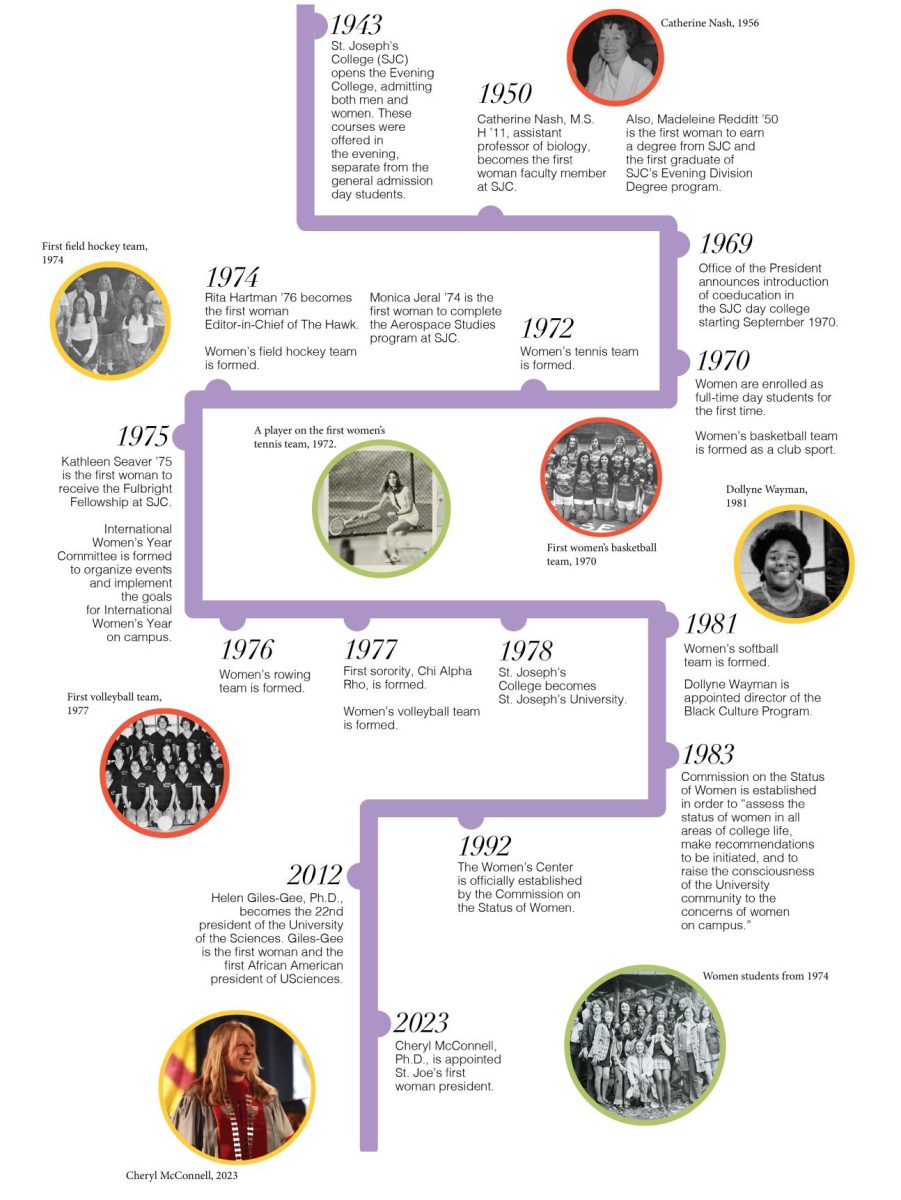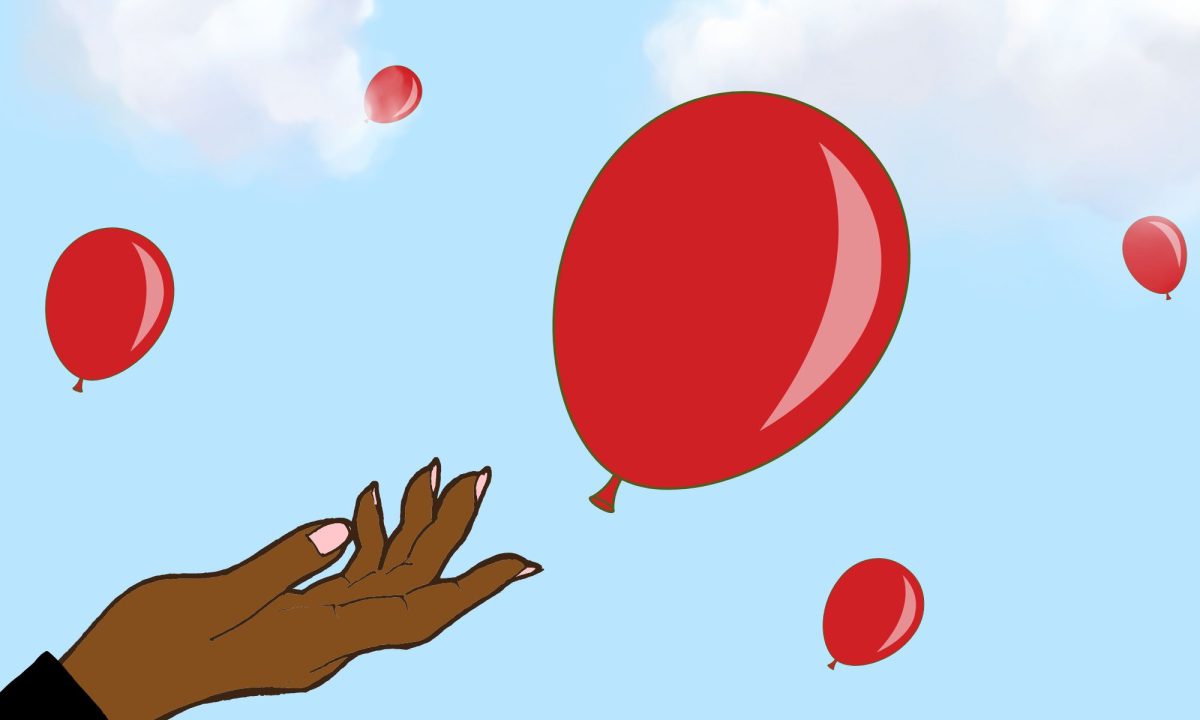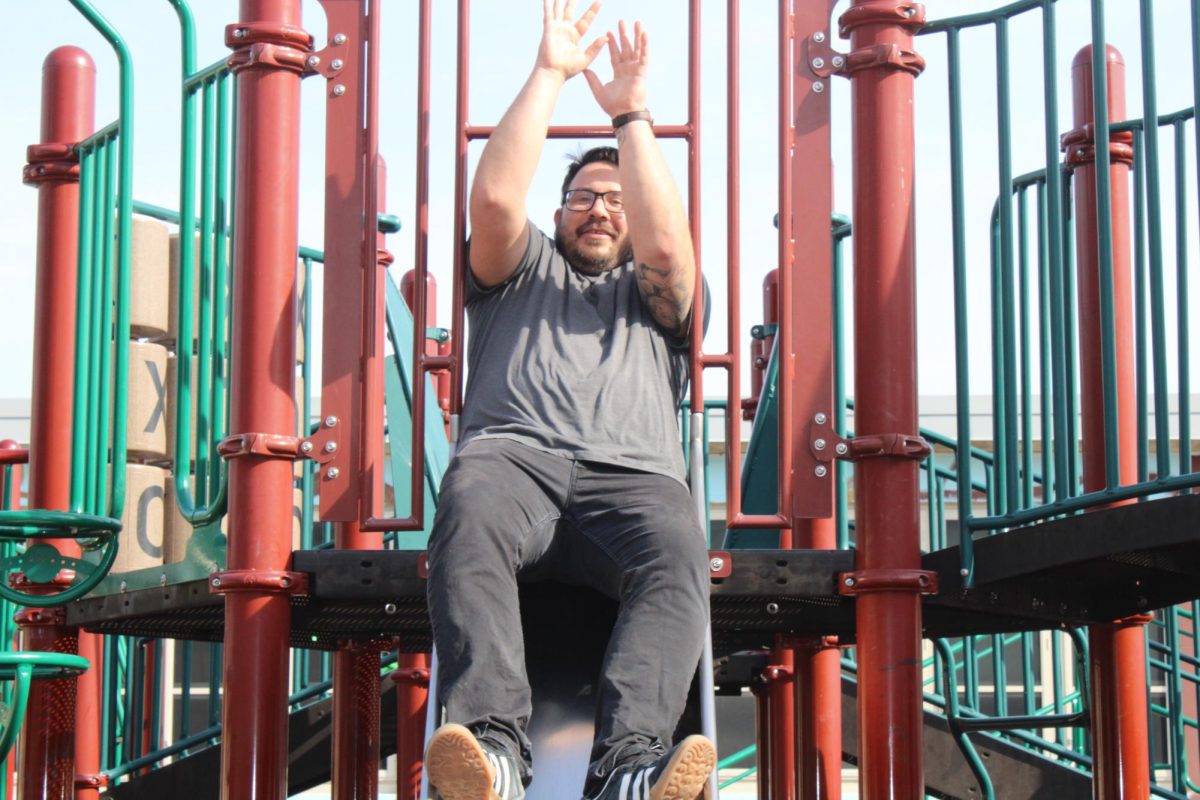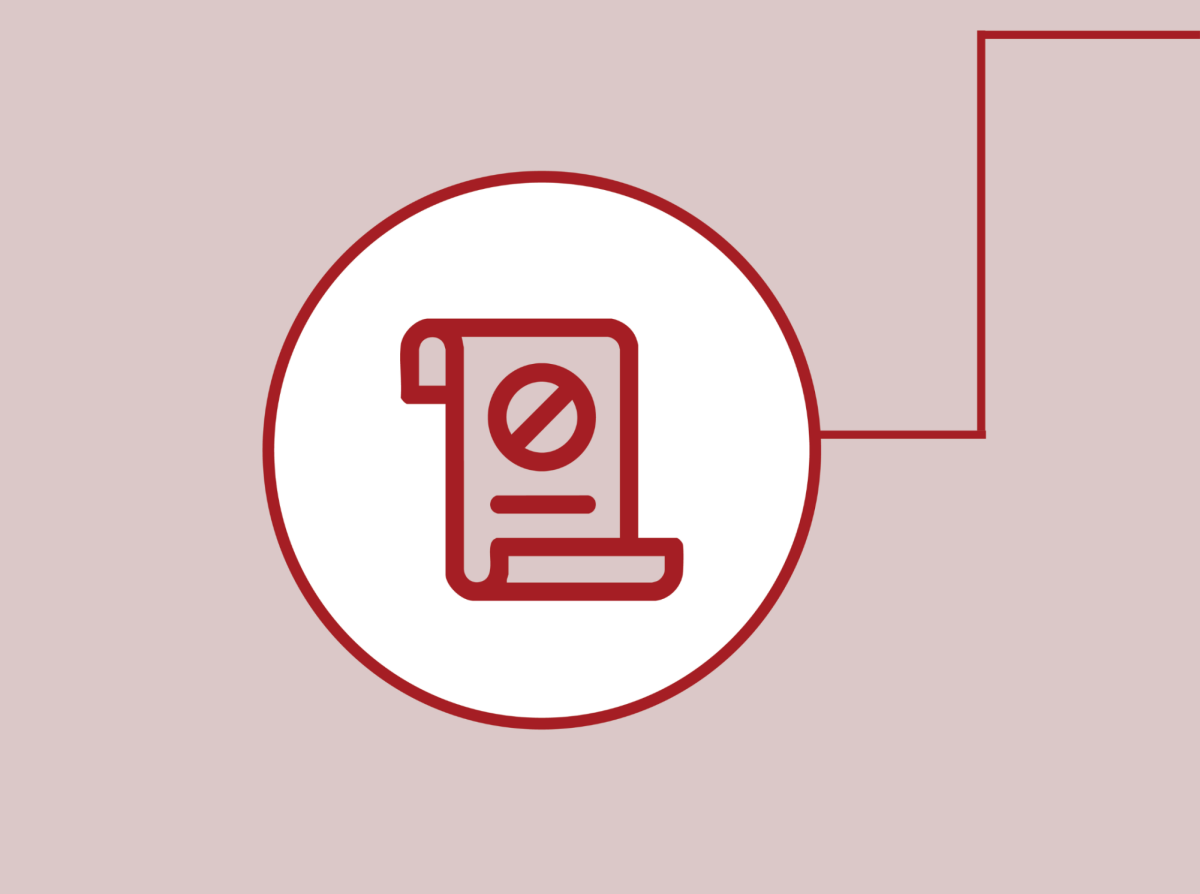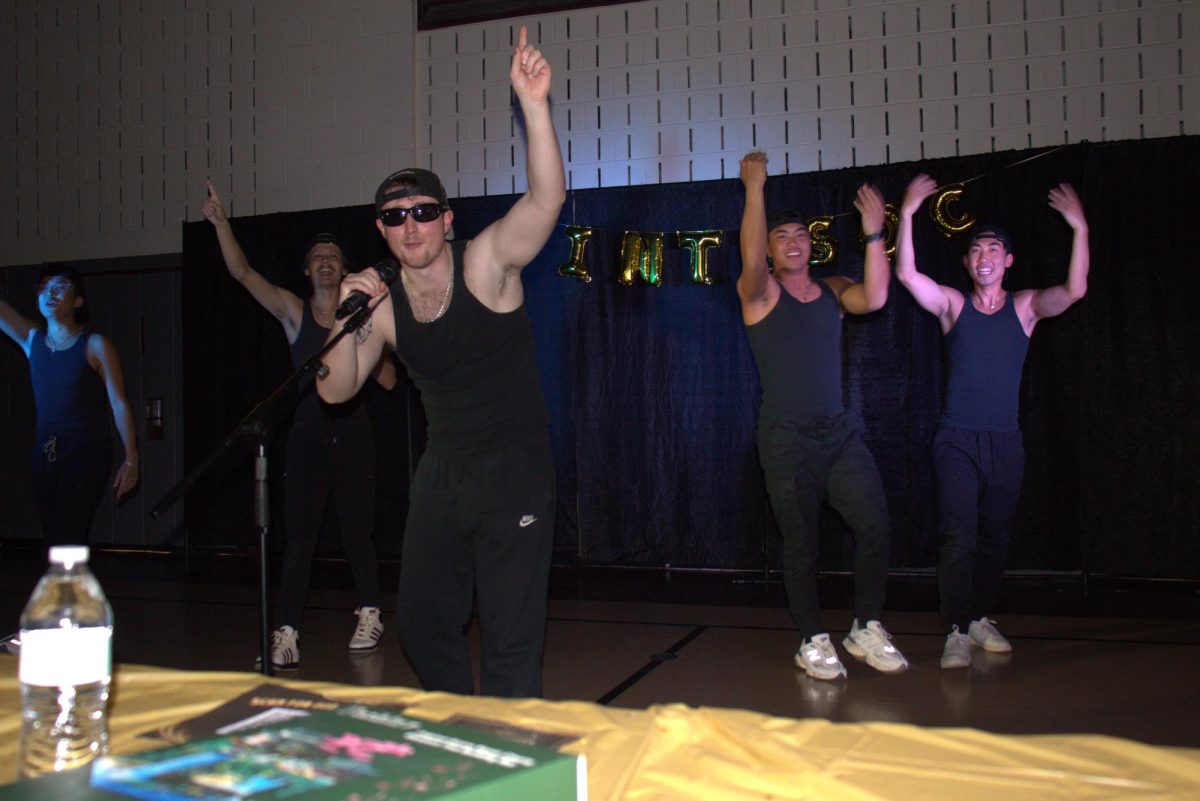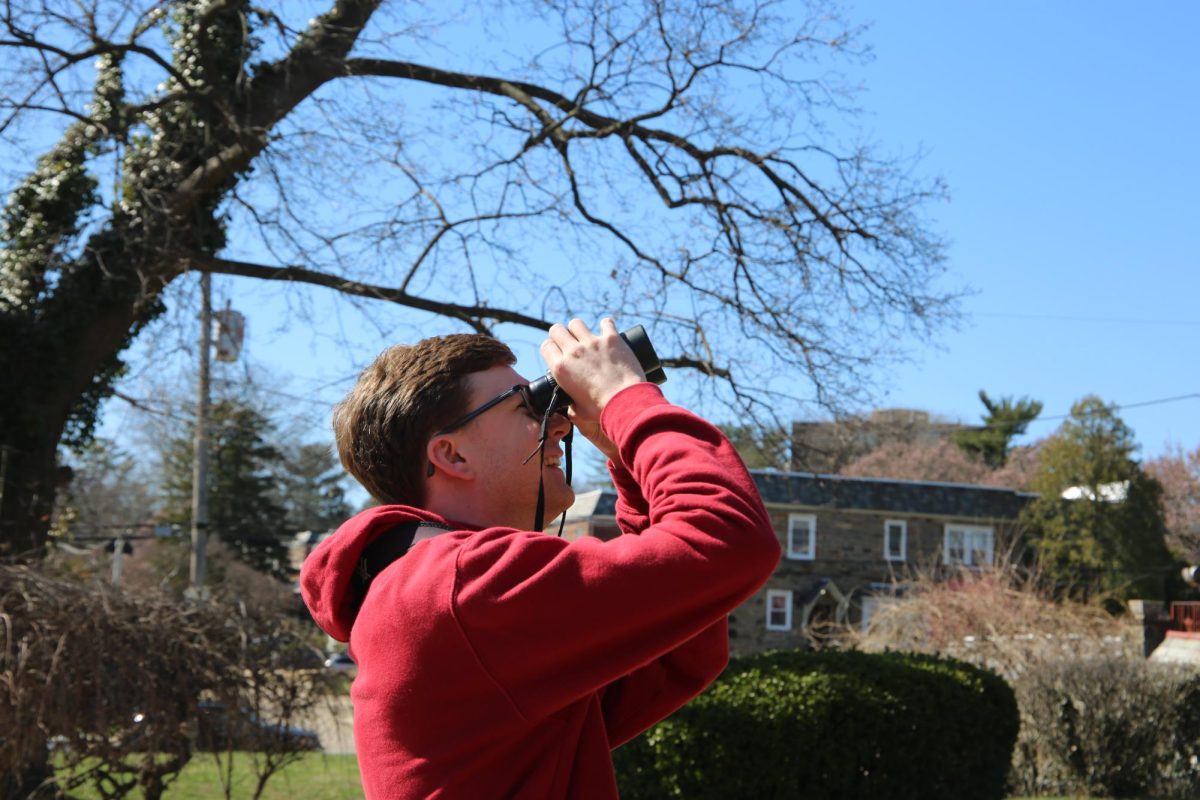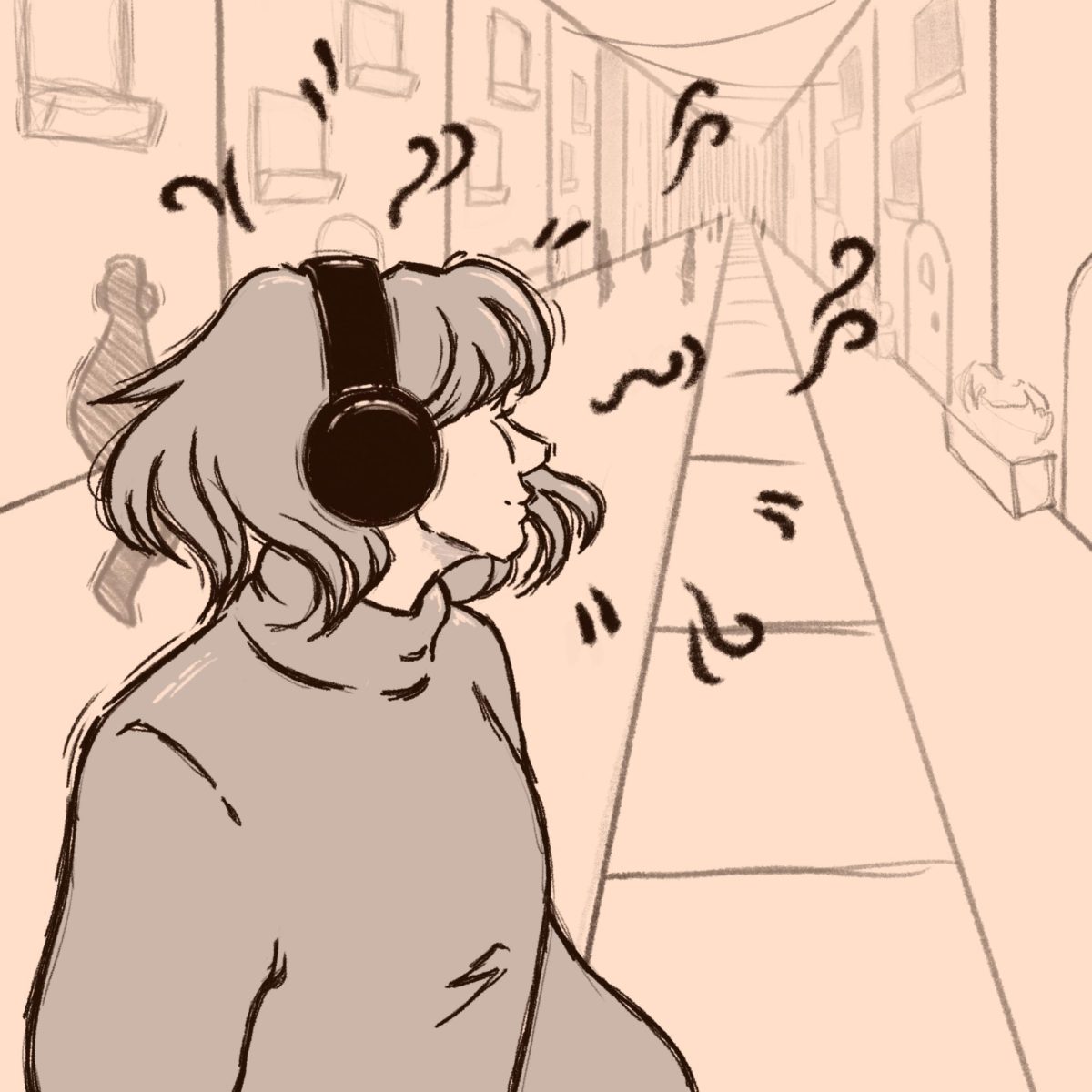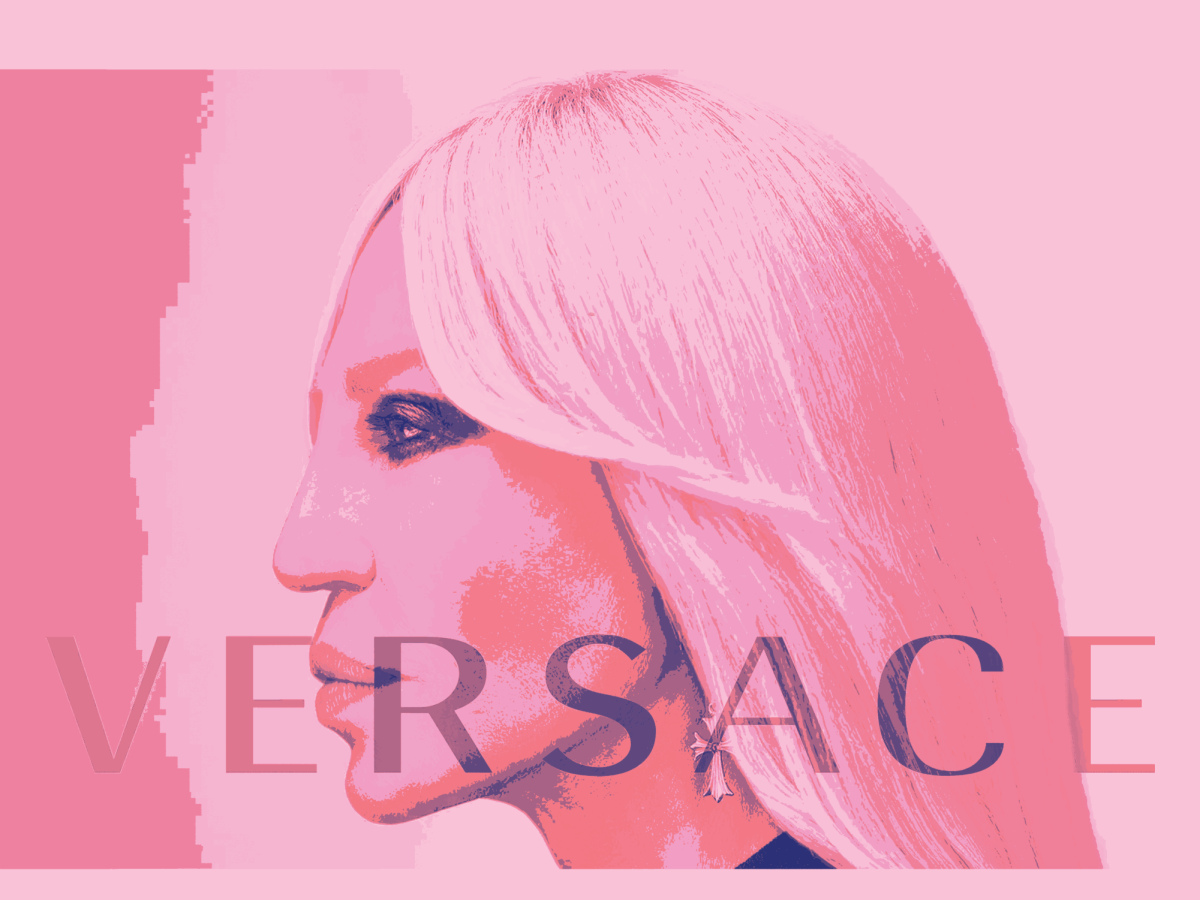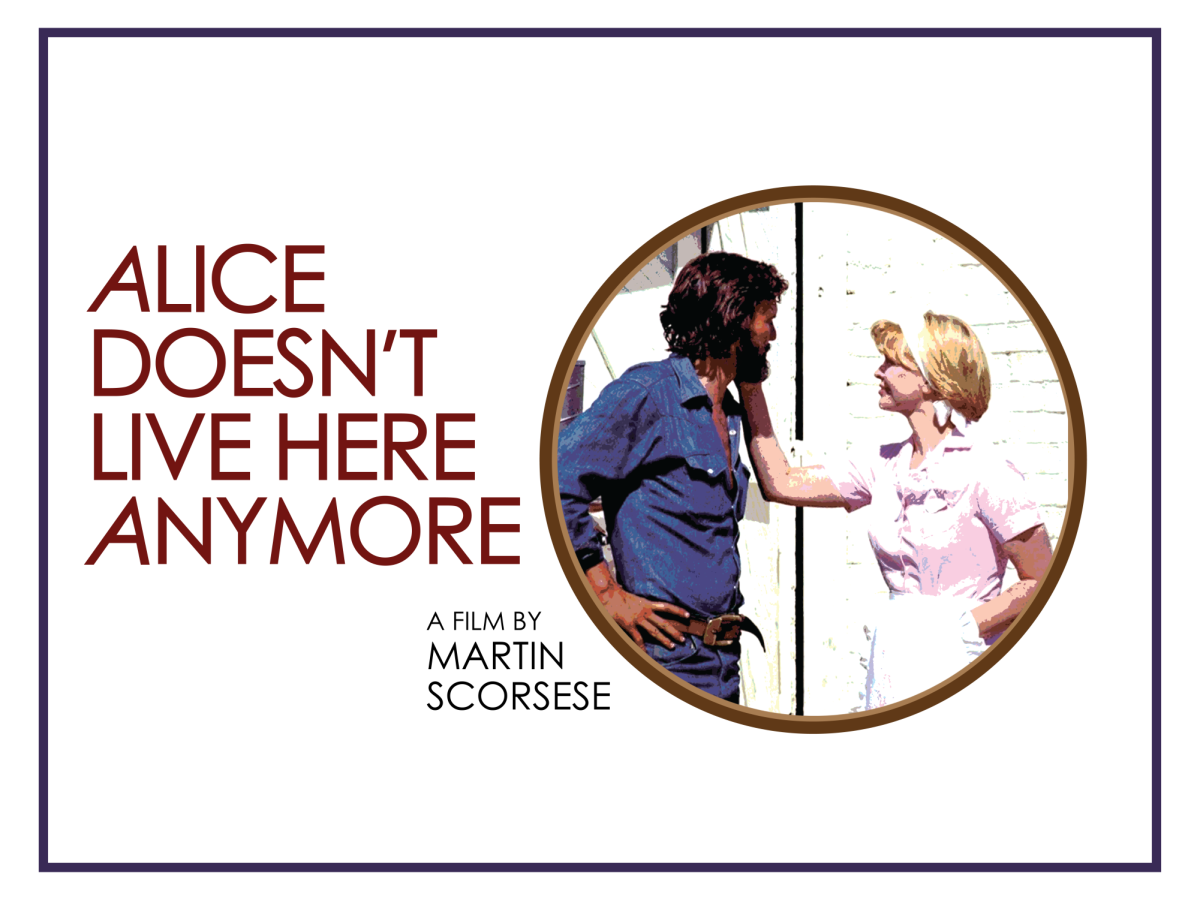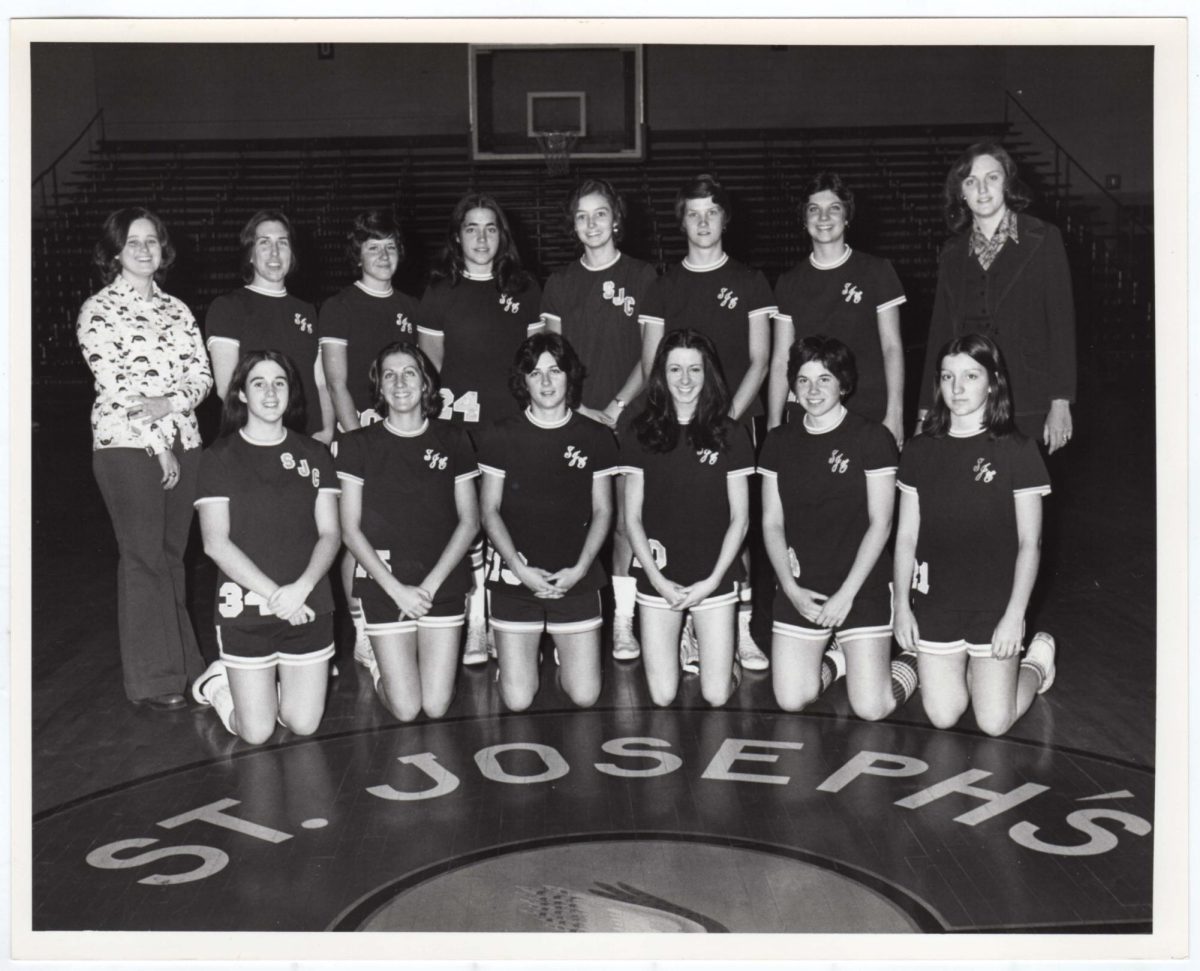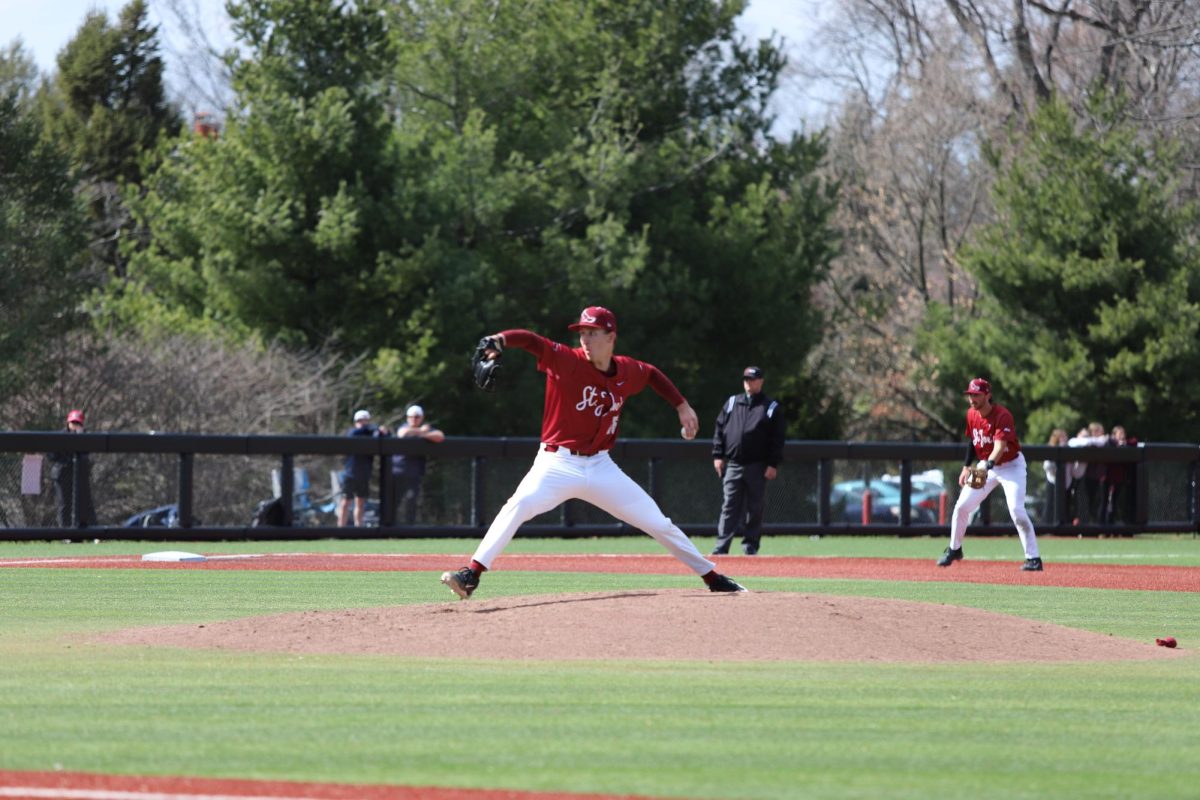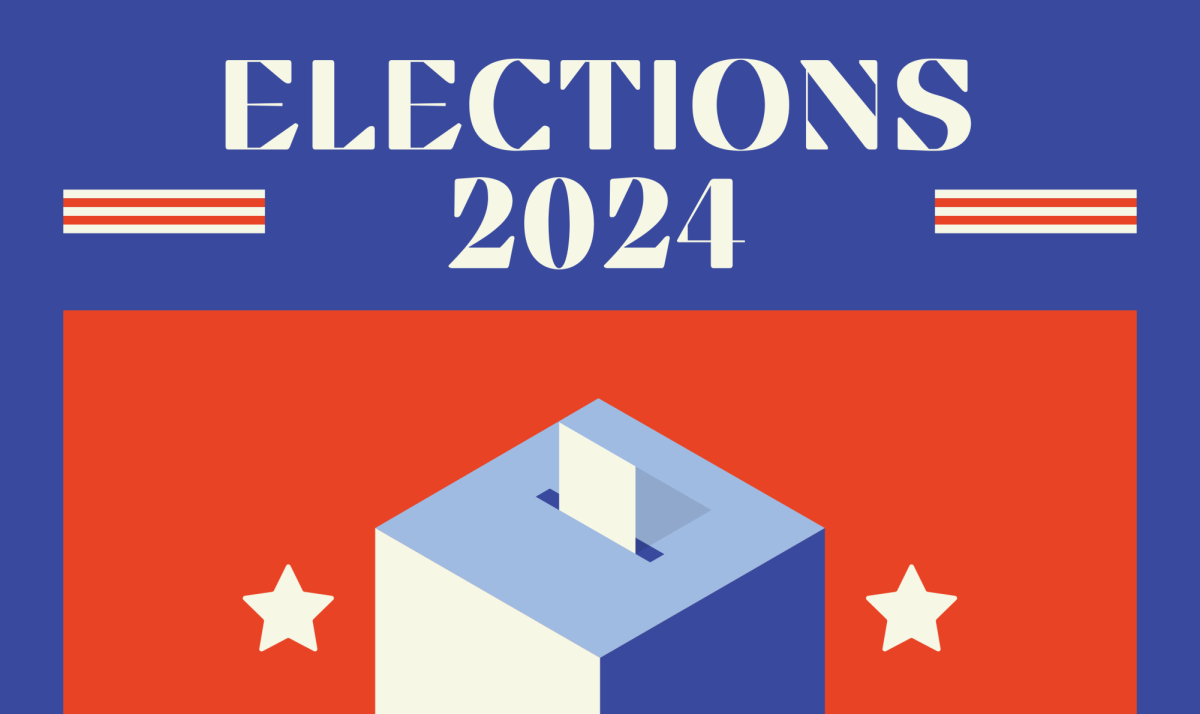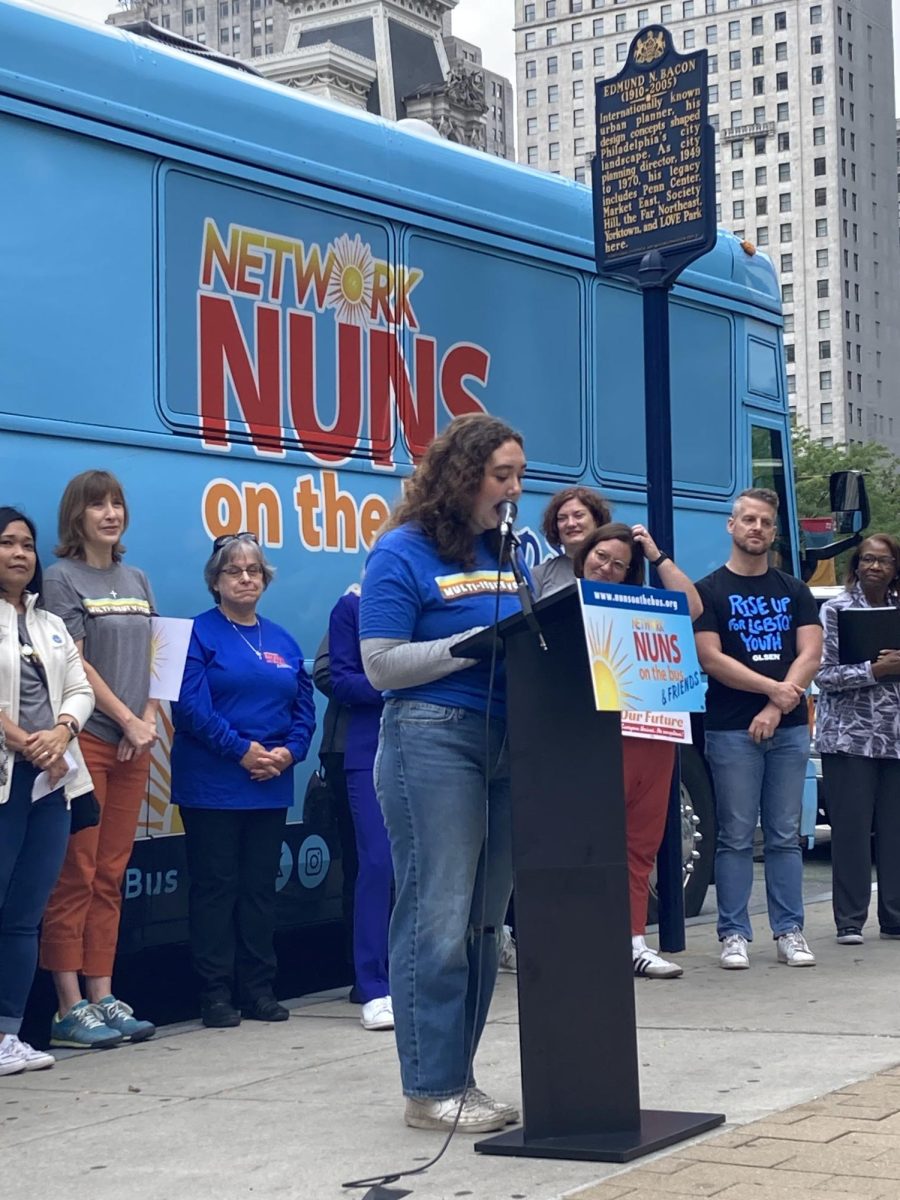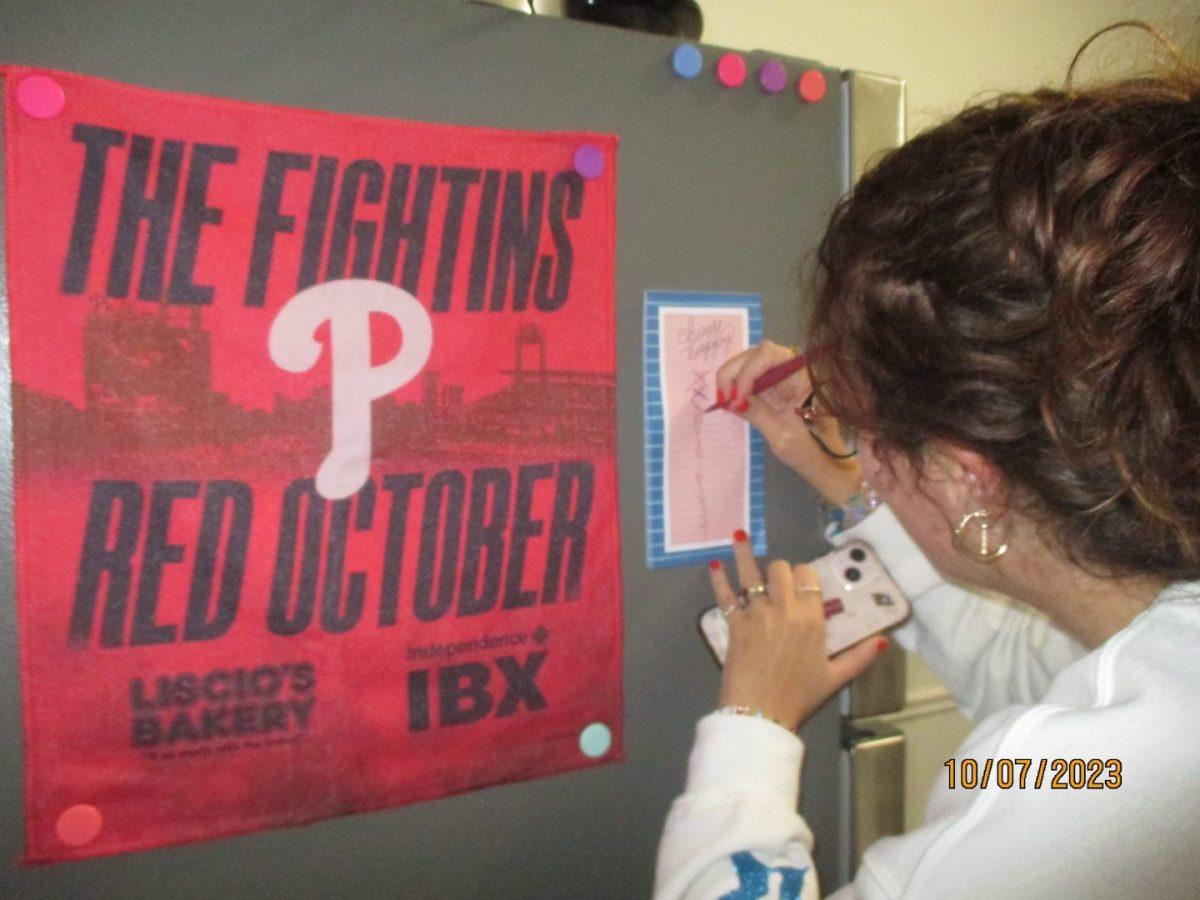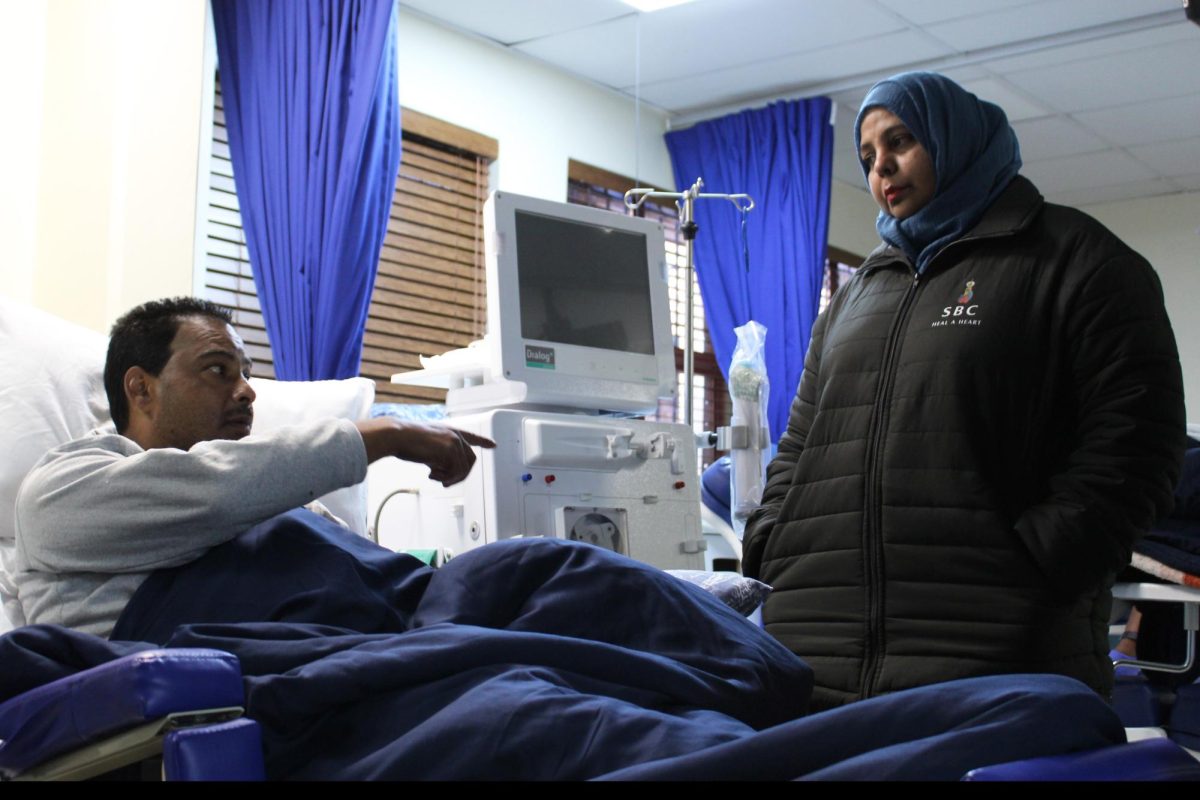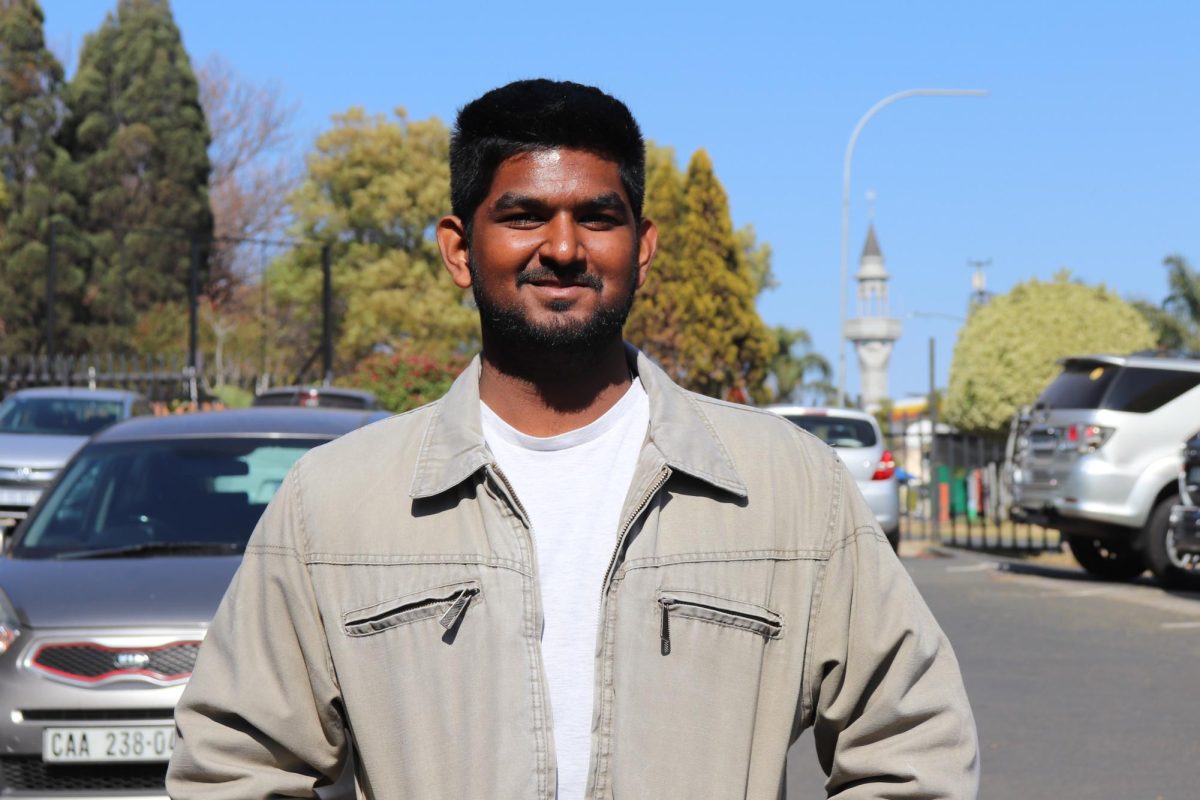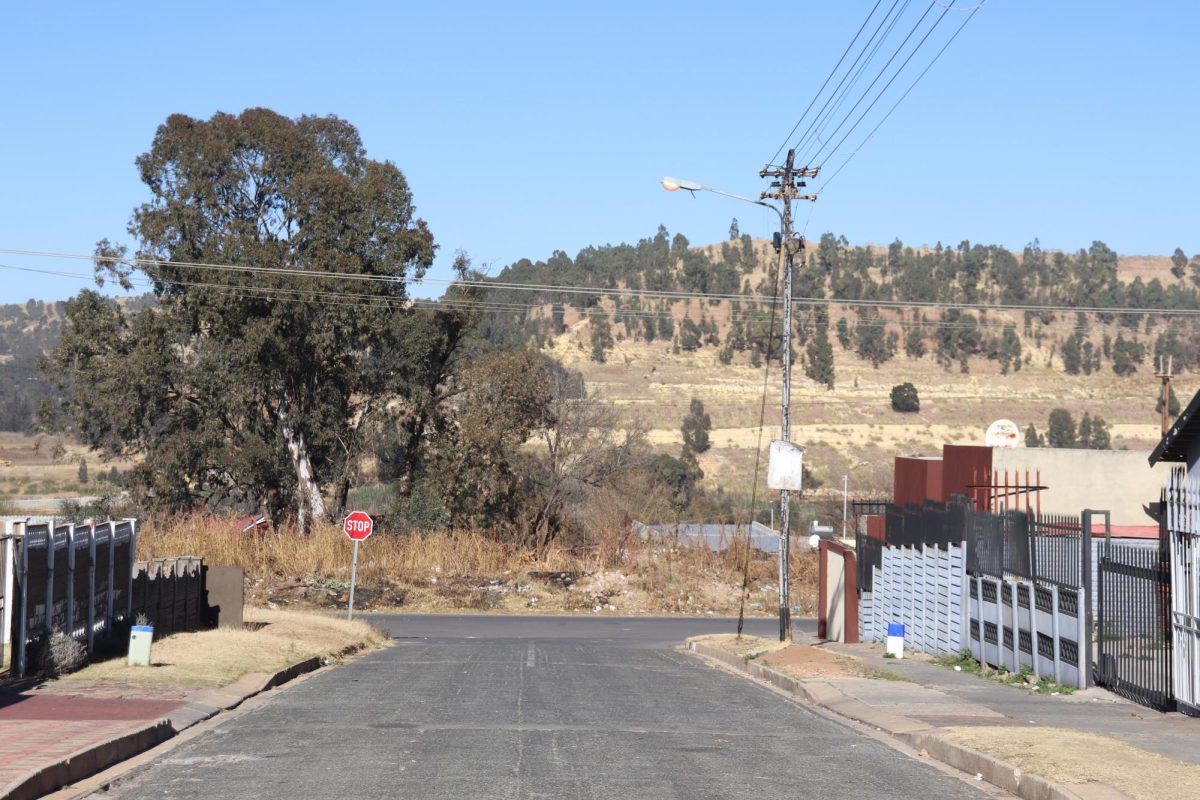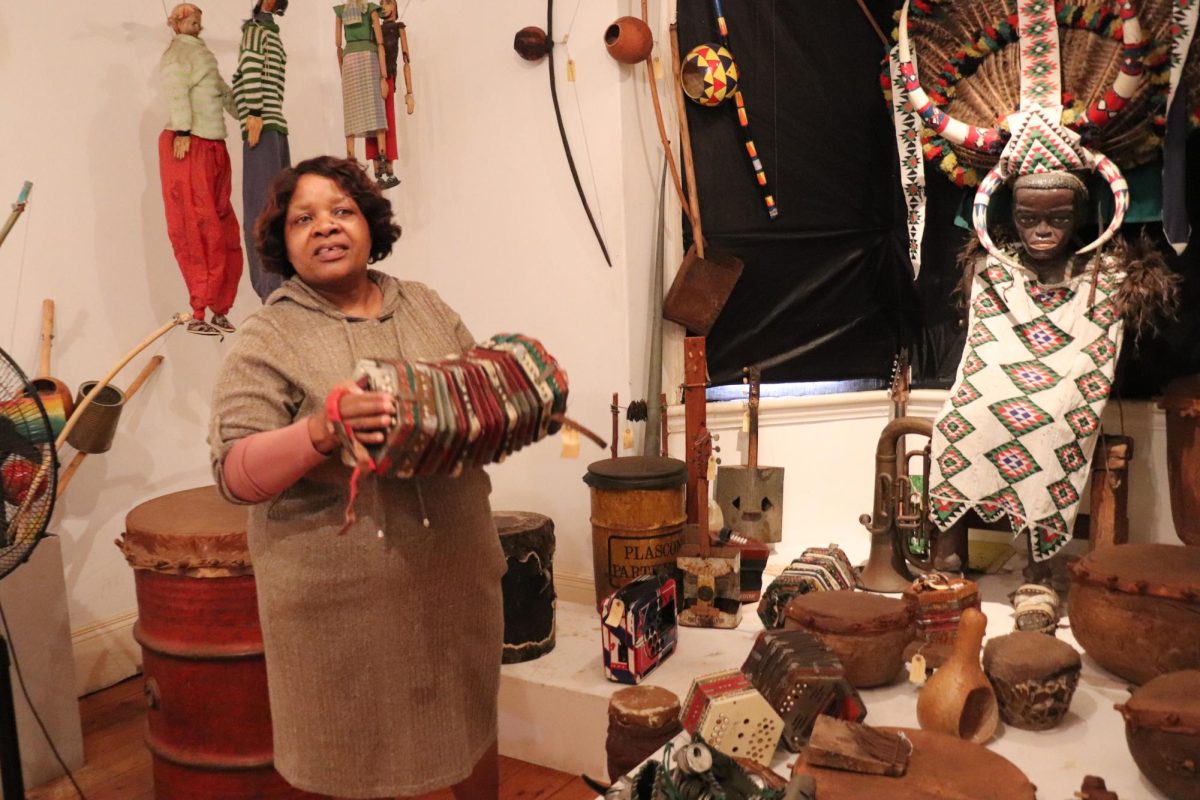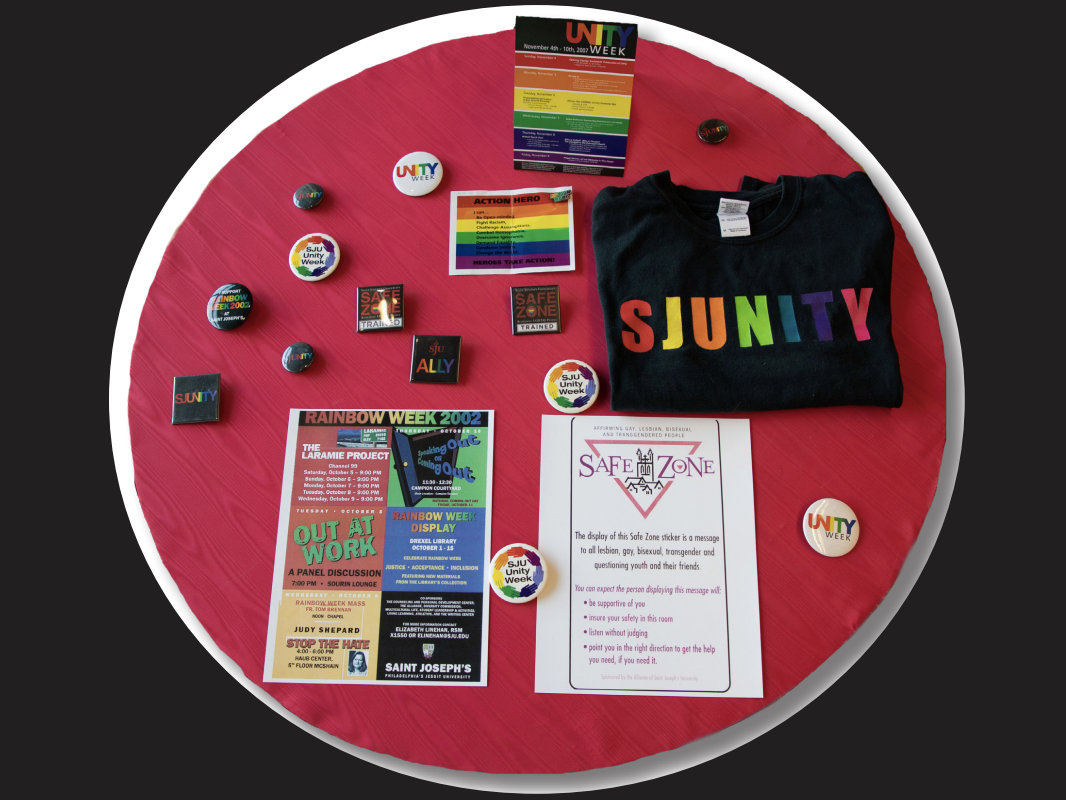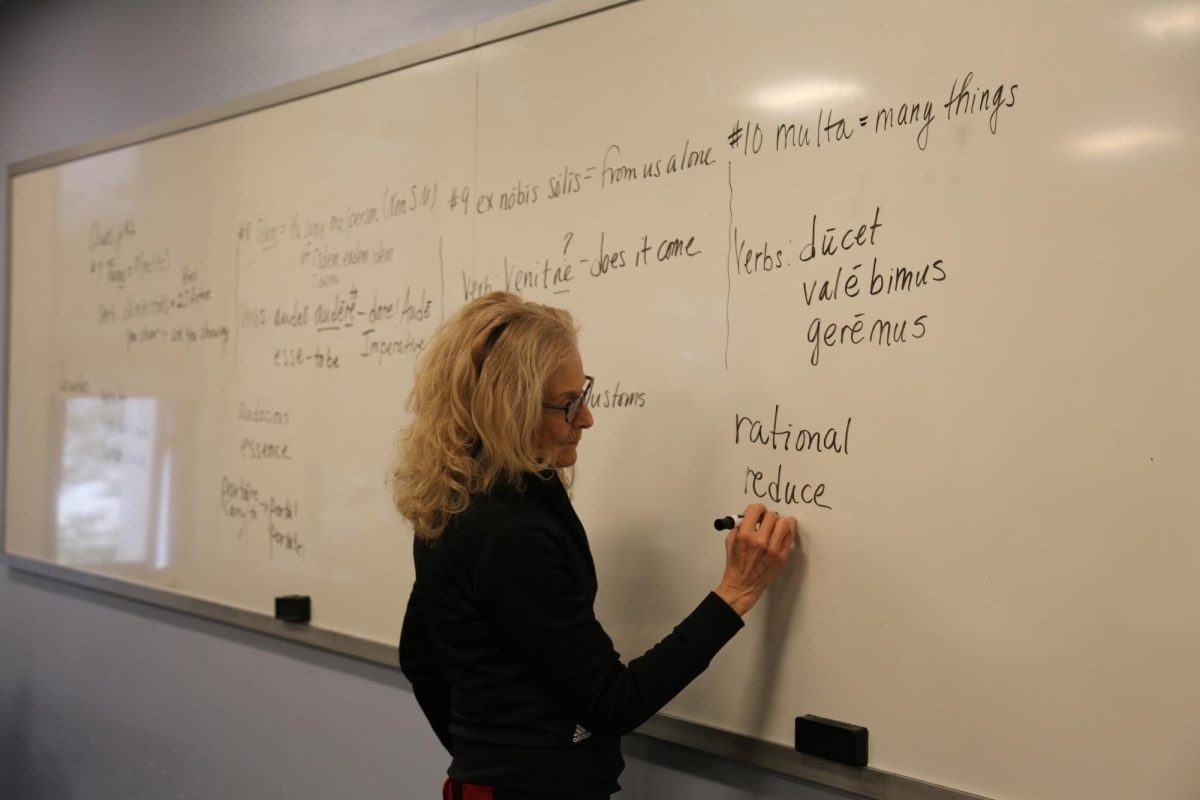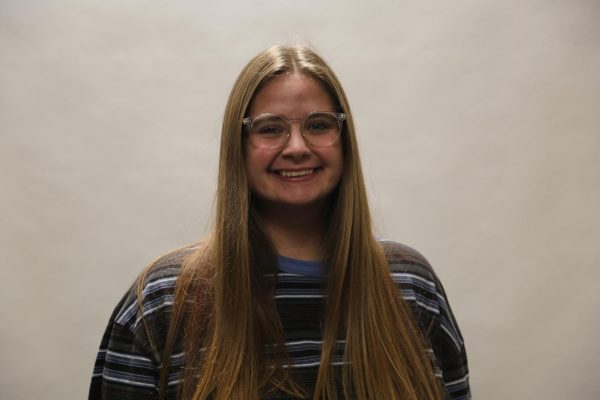An exhibit titled “Celebrating 30 Years of the Alliance,” a faculty and staff LGBTQIA+ support group, opens Oct. 21 in the Post Learning Commons.
The exhibit includes t-shirts, posters, pins and other memorabilia from past events hosted in support of members of the LGBTQ community at St. Joe’s.
Anne Krakow, library director, said the goal of the exhibit is to show students the history of important conversations about and support for the LGBTQ community at the university.
“I think it will be helpful for people to see [and] for students to see their faculty’s names on these documents, to say, ‘Oh, that person supports me. A person supports us,’” Krakow said.
Krakow said the exhibit was inspired, in part, by a 2022 Summer Scholars project, completed by Kevin Hoban ’24. Hoban conducted interviews with former and current Alliance members to explore the history of homophobia at St. Joe’s. Video recordings of Hoban’s interviews will be on display at the exhibit.
The Alliance was created in 1989 by Richard O’Malley, a former administrator; Vincent Genovese, S.J., then professor of philosophy; and Dr. Lourene Nevels, then school psychologist and professor of psychology. The group’s original name was Committee on Sexuality and Sexual Minorities (COSASM), and included faculty, staff and students, according to Elizabeth A. Linehan, R.S.M., professor emerita of philosophy and a member when it was COSASM.
Students left the group in 2007 when Students for Tolerance, Openness and Pride (STOP), the first official LGBTQ support group for students, was formed. STOP became Gay Straight Alliance (GSA) in 2011 and GSA became SJUPride in 2017, according to Will Marsh ’18, ’23, M.S., associate director of digital communications in the Office of Marketing and Communications.
The Alliance was formed after faculty and staff realized LGBTQ students on campus needed more support, Linehan said. At first, the group was primarily focused on education.
“We needed to make the university aware and supportive of the members of the community who were LGBTQ,” Linehan said. “It started because a student wrote an anonymous letter to The Hawk about how he had suffered as a gay student. And that sparked a conversation among a very small number.”
The group also tried a number of different ways to support LGBTQ students, said Ann Green, Ph.D., professor of English and long-time member of the Alliance.
“At one point, there was a hotline,” Green said. “They tried a support group, but people wouldn’t come to it at that time because no one wanted to be out. And then, at some point, we started doing Rainbow Week. And that became Unity Week and then that became Unity Month. And early on we started Safe Zone Training.”
Safe Zone Training, which began in 2001, offers an in-depth overview of the history of the LGBTQ community at St. Joe’s and raises awareness for the community through an allyship perspective.
The first Rainbow Week, held in February 2001, was designed to “offer support for LGBTQIA+ students, faculty and staff and to make LGBTQIA+ conversations normalized on campus,” according to Green. Rainbow Week became Unity Week in 2005 and then Unity Month in 2017.
When the Alliance first started celebrating Rainbow Week, the group was attacked by outraged parents, students and alumni who felt it went against the traditional values of the Catholic Church, according to a 2004 article from The Catholic Standard & Times.
Part of the Alliance’s mission was to ensure students that they could be both Catholic and LGBTQ. Rainbow Week was another time to affirm this, Green said.
“We’ve always opened [Rainbow Week] with a mass because we want to emphasize that you can be Catholic and gay,” Green said.
The Catholic Church was “pretty adamant that gay activity was a disorder” and “far behind what the general Catholic population was doing and thinking,” said Evelyn Minick, former library director and member of the Alliance from 1997 to 2014. The Alliance was seeking acceptance, not tolerance, for the LBGTQ community.
“It just felt like what we were doing in the Alliance, we were doing God’s work,” Minick said. “That’s just the feeling that I had. That as long as our intent was to help people feel welcome and comfortable in this environment, that it was the right thing to do.”
Celebrating Unity Month helps destigmatize education about being LGBTQ and reminds students that this community will always be a part of St. Joe’s, said Thomas J. Brennan, S.J., professor of English.
“Students need to remember where this began,” Brennan said. “This wasn’t something that just came out of nowhere. This has real and important antecedents and people took risks. And this culture that we have, I think we got a lot of work to do on this issue. But we’ve come this far, not just by chance, but because people made deliberate choices.”
Minick said she hopes the university is closer to a point where advocacy groups like the Alliance are no longer necessary.
“We always said in the Alliance that our job was to put ourselves out of business,” Minick said. “What we wanted to do was to create a campus environment where we didn’t need us anymore.”
Marsh said St. Joe’s is in a much better place than when STOP was created, and continuing to celebrate Unity Month is a reminder to the university of how far we have come.
“I think the pushback has continuously declined because I think people have to realize in order to be the institution that we want to be, you have to be inclusive,” Marsh said.
The exhibit will be on display through the end of November. A reception will be held on Oct. 21 from 12:20-1:35 p.m. on the first floor of Post Learning Commons.

